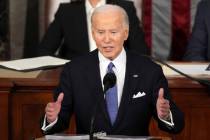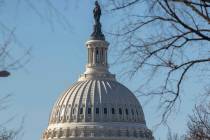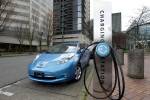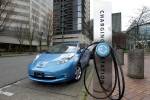COMMENTARY: Biden wants our cars and trucks: ‘Unhinged from reality’
Automobile dealers want the Biden administration to quit trying to force them to vroom vroom down electric avenue.
These dealerships are now rolling the throttle on their opposition to new regulations, saying they are being pushed by “unelected Washington bureaucrats dictating what kind of vehicles Americans can buy.”
The new EPA emissions rules, part of the administration’s climate change policy agenda, would drastically limit the availability of traditional vehicles. While Biden political allies claim, “It’s not a ban on gas cars,” the rules would mean gasoline-powered cars can make up no more than 30 percent of auto sales by 2032.
Last year, fewer than 8 percent of new cars sold in the United States were EVs. The goal of the tailpipe emissions rule is to get that to nearly 60 percent — not including hybrids — in just eight years.
This will “require an increase in sales of electric vehicles that is far beyond the consumer interest we are experiencing at our dealerships,” according to EV Voice of the Customer, an industry group representing 5,000 auto dealers.
“This EV mandate is not the result of an open congressional debate,” the dealer coalition wrote. “Despite generous government, manufacturer and dealer incentives, our customers continue to bypass EVs over concerns about affordability, charging infrastructure, performance in cold weather and resale value.”
And the National Automobile Dealers Association added, “EPA’s proposed rule goes too far, too fast by not acknowledging current real-world consumer demand for EVs. Members of Congress are encouraged to support efforts to counter EPA’s overly aggressive EV mandates and attempts to effectively ban the sale of gas-powered cars.”
Fewer auto industry experts believe it’s possible to reach Biden’s EV sales mandate. Instead, it’s more likely to drive up costs on the remaining gasoline-powered cars, putting them out of reach of typical Americans.
“This regulation is another example of President Biden’s assault on the middle class,” said Thomas Pyle, president of the Institute for Energy Research and the American Energy Alliance. “The American people should be free to choose the types of cars and trucks that make the most sense for them. This administration wants to take away that choice by forcing Americans into specific vehicles preferred by government agents at the EPA.
“The Biden regulations will make cars more expensive and ultimately make fewer cars available for Americans.”
And then there are questions about the climate effect of a shift to electric vehicles.
According to a study from the data firm Emission Analytics, EVs release more toxic particles into the atmosphere than traditional vehicles. Why?
Because automobile tailpipe emissions are already so low, most vehicle-related pollution comes from tire and brake wear, not exhaust. The Emissions Analytics study found brakes and tires on EVs release 1,850 times more particle pollution compared with modern tailpipes.
There are even conflicting reports on the net climate effect of current EV policies. Some critics say that, once the carbon effect of mining the rare earths needed to make the vehicles is calculated, they have the same carbon footprint as a comparable gasoline-powered car. The data don’t back that claim. It’s true that EVs come off the line with a large “carbon debt,” but the gap quickly closes once gas cars hit the road and begin burning fossil fuels.
But what about EVs that spend most of their time in the garage, not on the street?
A recent Harvard study found that because EVs are often bought by people who drive very few miles, their net carbon footprint actually increased with their EV purchase. Replacing high-mileage gas cars with EVs can make a carbon-emissions difference, but putting an urban bike rider in a Chevy Volt does not.
And then there are the realities of who is buying expensive EVs and how they are using them.
The Institute for Energy Research recently looked at Norway, a global leader in green energy and taxpayer-subsidized climate policy. IER reports Norway spends nearly $4 billion annually on EV subsidies, money it can afford thanks to the nation’s $1.5 trillion sovereign wealth fund — the largest in the world — largely funded by oil and gas production.
While massive subsidies for electric vehicles and disincentives for traditional cars have put EVs into two-thirds of Norwegian households, the number of traditional gas-burning vehicles has grown as well. “While the population grew by 11 percent, the total number of passenger cars grew by 25 percent,” IER reports.
Why? Like Americans, Norwegians find gas-powered cars convenient and reliable. They like them. The conclusion, said Daren Bakst of the Competitive Enterprise Institute, is a Biden EPA policy that simply won’t work.
“This is one of the most extreme rules ever finalized by a federal agency,” Bakst said. “The EPA’s rule would restrict the ability of Americans to buy gas-powered vehicles, a chilling abuse of power and a wanton disregard for individual freedom.
“Unhinged from reality, the EPA is ignoring the fact that consumers don’t want to buy electric vehicles at the level the Biden administration envisions.”
Jessica Towhey writes on education and energy policy for InsideSources.com.




























